Why is it always such a struggle to teach similes and metaphors? Why are similes as easy for students to grasp as 1+1, but metaphors are a map without a key? See what I did there? Hilarious I know. What’s not hilarious, is how many times I’ve pulled my hair out over students struggling to differentiate between the two. If you’re in the same boat, I scoured the internet and went door to door to my colleagues to find the best tips out there so you don’t have to.
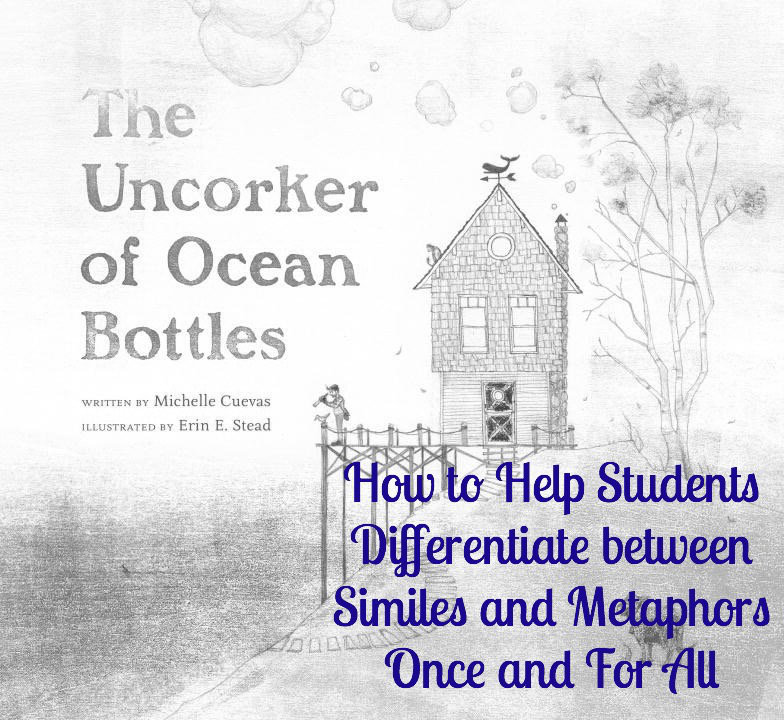
Teach Similes and Metaphors with Picture Books
I teach 4th grade, and picture books are the cornerstone of my curriculum. There isn’t a subject out there that doesn’t benefit from a picture book. Trust me when I tell you, picture books ar ethe perfect way to teach similes and metaphors!
- They’re perfect for mini-lessons.
- They’re quick
- They’re engaging
- Students love being read to. No matter how old they are. The older they get the more novel and exciting the idea is – trust me, they’ll love it.
Picture Books and Mentor Text Ideas:
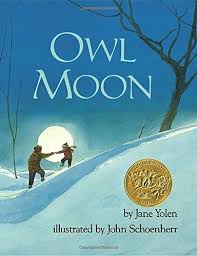
2. The Uncorker of Ocean Bottles – Michelle Cueva
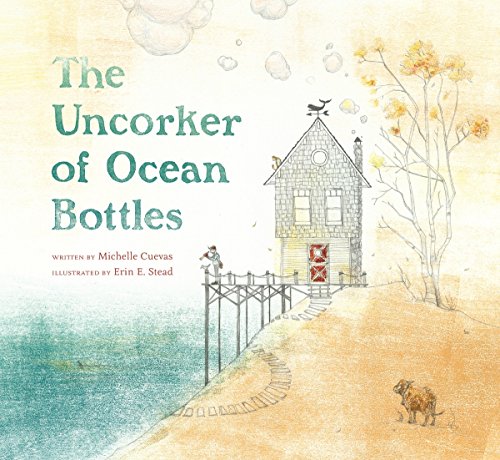
3. Skin like Milk, Hair of Silk – Brian Cleary
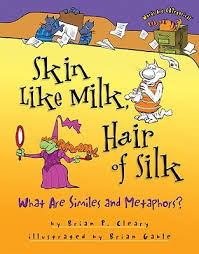
Step one: Finding Similies and Metaphors in Reading
1: Introduce and teach similes and metaphors. Define them as clearly as possible.
2: Create a T chart and give examples of each
3: Read picture book, stopping when you find the first few similes and metaphors, discuss and add them to your t-chart.

4: Continue reading; have students raise their hands when they notice any similes or metaphors. Discuss and add to the chart.
5: Have students find similes and metaphors in their own reading, or in picture books of your choice.
Step Two – Using Similes and Metaphors in Writing
Once your students can recognize the difference between similes and metaphors they’ll need to write their own to fully master them.
We do this by completing a short writing project – The First Snow. It’s basically a poem made out of similes and metaphors about the first snow
* Find more detailed instructions here
Create another T-Chart. Come up with a topic – dogs, school, the desert. Have your students brainstorm a list of adjectives that describe this topic on one side of the chart. On the other side, list additional nouns that these adjectives describe. Give your students examples of putting these ideas together to form both similes and metaphors. (See picture below)

After you make the chart, It’s so easy to put these sentences together into a poem which makes for a great bulletin board display! We did ours on the first snow. You can choose any topic – the new school year, nature, friends, anything!


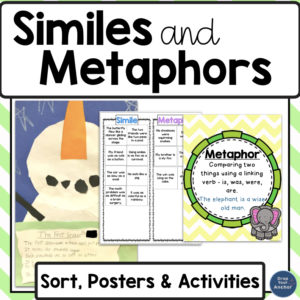
Step Three: Make Reinforcing Fun!
For your students to truly remember the difference, you need to reinforce the lesson, and you need to make finding and using similes and metaphors a challenge.
1. Stop when you run across either a simile or a metaphor during read alouds. “Hmmm he was as cool as a cucumber. What is that?” Don’t just do this now, you’ll need to do it for the rest of the year.
2. Create a place for students to post similes and metaphors they find in their own reading. Allow students to use fun post-its to display their findings somewhere visible in the room.
3. Have fun with idioms! Idioms are a great way to teach similes and metaphors. Looking at idioms from that point-of-view helps students find meaning in them.

For idiom centers and projects in my TPT store click here.
Whatever you do, don’t teach similes and metpahors once and then move on. You need to bring them up as much as possible, find them in your textbooks, emails, and newsletters. Bring them up early and often – by the end of the year, they’ll be pros!
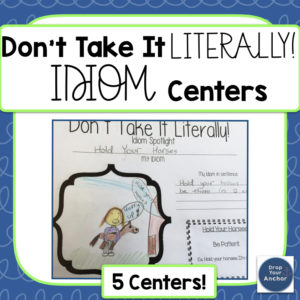
Leave a Reply
You must be logged in to post a comment.